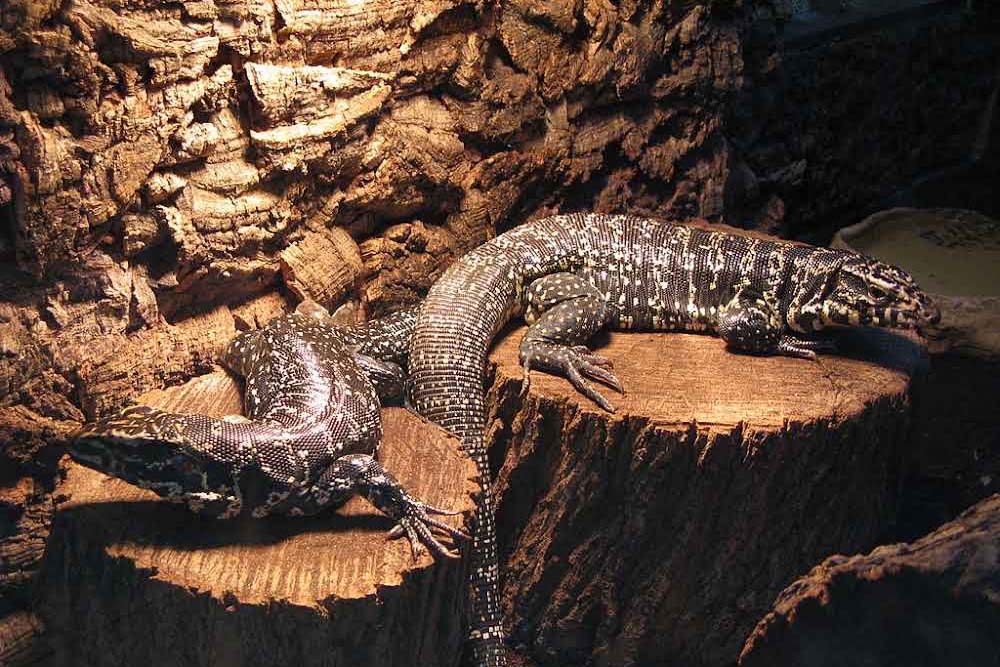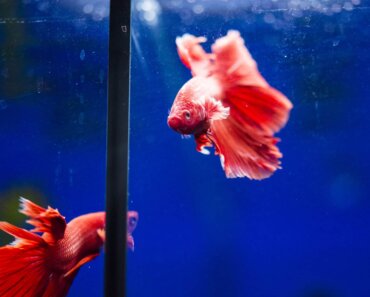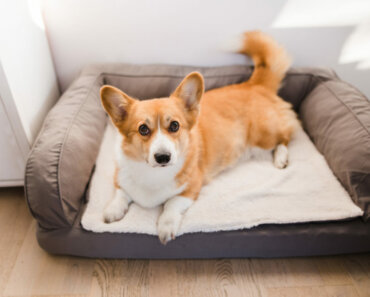
If you’re considering getting a pet reptile, a tegu lizard might just be the perfect choice for you. These fascinating creatures are native to South America and can grow up to 4.5 feet in length.
Tegus are known for their intelligence, playful personalities, and affectionate nature towards their owners. But taking care of a tegu isn’t like taking care of any other pet.
These lizards require specific environments to thrive and stay healthy. In fact, providing a suitable enclosure is crucial for their overall well-being.
The Importance of Providing a Suitable Enclosure
One of the most important things you can do as a tegu owner is to provide them with an enclosure that simulates their natural habitat as closely as possible. Not only will this keep them happy and healthy, but it will also prevent unwanted behaviors such as aggression or stress caused by inadequate living conditions. When planning your tegu’s enclosure, remember that this is where they’ll be spending most of their time.
It needs to be spacious enough for them to move around comfortably while also providing hiding spots and areas for basking in the sun. In addition to space considerations, there are other factors that need to be taken into account when creating an appropriate environment for your pet tegu lizard.
This includes proper lighting and heating sources, substrate options, decorations such as branches or rocks, feeding and watering options, cleaning schedules – all aimed at ensuring optimal health outcomes. In the following sections we’ll dive deeper into each aspect of creating an ideal home environment for your tegu so that you can provide them with everything they need to thrive!
Size and Material of Enclosure
Recommended Size Based on Tegu’s Size and Behavior
When it comes to tegu lizards, size matters. While they start out small, they can grow up to four feet long and weigh up to 30 pounds.
They also have active personalities that require room for movement, exploration, and exercise. As such, it is recommended that the enclosure for a tegu should be at least 8 feet long, 4 feet wide, and 4 feet tall.
It is important to note that these dimensions are just the minimum- bigger is always better for a tegu’s quality of life. Additionally, if you plan on housing more than one tegu together (which is not recommended), you’ll need even more space.
Best Materials for Building or Buying an Enclosure
When it comes to materials for building or buying an enclosure for your tegu lizard, there are several options available:
1. Wood: Wood may seem like an affordable option at first glance but has several disadvantages- It can hold moisture which may cause mold growth while also being difficult to clean.
2. PVC: PVC enclosures are lightweight and easy to clean but do tend to be expensive.
3. Acrylic: This material is often transparent which allows you see your pet while minimizing the chances of escape
4. Glass: Glass enclosures are often used since they provide good visibility; however easy breakage especially when exposed to heat. Overall PVC or acrylic materials tend to make good options due to their ease of cleaning as well as providing a safe living environment making them ideal choices when building/buying your lizard’s new home.
Lighting and Heating: Keeping Your Tegu Lizard Healthy and Happy
One crucial aspect to consider when creating an enclosure for your tegu lizard is lighting and heating. These reptiles need specific environmental conditions in order to thrive, and providing the right amount of light and heat is a critical part of achieving this.
The Importance of UVB Lighting for Tegus
UVB lighting is essential for tegus’ health because it helps them produce Vitamin D3, which is necessary for proper calcium absorption. Without adequate UVB exposure, tegus can develop metabolic bone disease, which can lead to severe health issues such as bone fractures or deformities.
To provide sufficient UVB lighting, you can use a fluorescent bulb specially designed for reptiles that emits enough UVB rays within its spectrum. The bulb should be placed within the enclosure at a distance where your tegu can bask under it but not get too close or too far away from it.
Types of Heating Options Available
Tegu lizards are cold-blooded animals that require external heat sources to regulate their body temperature. There are several options available when it comes to providing heat in their enclosure:
- Basking lamps: These lamps emit intense heat and are perfect for creating a hot spot where your tegu can bask. They should be placed on one side of the enclosure so that they create a temperature gradient across the space.
- Ceramic heaters: Ceramic heaters emit infrared radiation that heats up objects in their proximity without emitting light. They are great options if you need extra heating during the night.
- Heat mats: Heat mats are thin pads that go under the substrate and provide localized warmth from below. They are ideal for creating a warm spot where your tegu can rest or digest food.
It is essential to provide a temperature gradient within the enclosure, with a basking spot that ranges from 100°F to 110°F, and an ambient temperature that ranges from 80°F to 85°F. This gradient allows your tegu lizard to regulate its body temperature by moving between different areas of the enclosure.
With proper lighting and heating, you can create an environment that promotes your tegu’s health and happiness. Regularly monitoring the temperatures and replacing bulbs or heaters when necessary will ensure that your beloved pet stays comfortable and healthy for years to come.
Substrate and Decorations
Best Substrates to Use in the Enclosure
Choosing the right substrate for your tegu’s enclosure is crucial. The right substrate should be able to hold moisture, provide a comfortable surface for your tegu, and be easy to clean.
Some popular substrates include coconut coir, cypress mulch, and reptile carpet. Coconut coir is a great option because it helps maintain humidity levels while also being easy to clean.
Cypress mulch is another great option that is affordable and holds moisture well. Reptile carpet can be used in combination with other substrates or alone since it’s easy to clean but doesn’t hold moisture very well.
Importance of Adding Decorations Such as Hides, Branches, and Rocks
Adding decorations such as hides, branches, and rocks can make your tegu feel more at home in their enclosure. Hides give them a place to hide when they feel scared or stressed out.
Branches can be used for climbing and give them more room to explore their enclosure. Rocks not only add visual appeal but also provide an additional surface for basking.
When choosing decorations for your tegu’s enclosure, it’s important to consider safety first. Make sure that any branches you choose are sturdy enough to support your tegu’s weight without breaking or falling over.
Rocks should be securely placed so they don’t shift or move around if your tegu decides to climb on them. In addition to safety concerns, you should also consider how these decorations will impact the temperature of the enclosure.
If you’re using rocks for basking spots, make sure they’re placed in areas where the temperature isn’t too hot or too cold. Overall adding decorations is important not just for aesthetic reasons but also for creating a healthier environment for your pet tegu.
Tips and Tricks
– Consider adding multiple hides throughout the enclosure to give your tegu plenty of options for hiding.
– Don’t be afraid to get creative with the decorations – you can use natural materials like wood or rocks, or even create your own with non-toxic materials.
– Make sure any branches or rocks are securely placed so they don’t fall over or pose a danger to your tegu.
– Clean all decorations regularly to prevent the build-up of bacteria or other harmful substances.
The Right Diet for Your Tegu
Your tegu lizard’s diet should consist of a balanced mix of proteins, fruits, and vegetables. You should avoid feeding your pet only one type of food group since this can lead to serious health problems. Wild tegus are known omnivores, so you should try and replicate their natural diet as much as possible.
When it comes to protein, you can feed them a variety of things that range from insects like crickets and mealworms to small rodents. While it is acceptable to feed your pet pre-killed rodents, some owners prefer feeding live ones since they mimic the hunting process for the lizard.
For fruits and vegetables, you can offer a wide range of items like berries, bananas, squash, carrots and more. The nutritional content of these foods is essential to keeping your pet healthy so do not skimp on them.
Watering Options for Your Tegu
Tegu lizards need plenty of clean water because they drink frequently throughout the day. Water bowls should be large enough for your pet lizard to soak in but shallow enough that they don’t accidentally drown in it. They also need an area where they can take a “bath” which helps maintain proper skin hydration levels and makes shedding their skin easier.
Tegus will often defecate while soaking in water so ensure that you replace the bathing water frequently during cleaning sessions. If you opt for misting instead of providing a bath area; ensure that you use fresh water each time since stagnant water is likely contaminated with bacteria or fungi.
Feeding Schedule
The frequency at which you feed your tegu largely depends on its age and size. Young hatchlings require daily feeding while adult lizards can eat every few days depending on their appetite.
You mustn’t overfeed your lizard because obesity leads to several health issues, especially in captives. It can range from kidney failure to liver problems.
Gut Loading Your Feeder Insects
Feeder insects like crickets and mealworms are a great source of protein for your tegu. But, before feeding them to your pet; you should “gut-load” the insects with nutritious food.
This increases the nutritional content of what your lizard feeds on and ensures they get more of the essential nutrients that are necessary for their healthy growth. You can gut-load feeder insects by feeding them fruits, vegetables or commercial gut load products that promote their nutritional content.
Maintenance
Keeping a tegu lizard as a pet requires commitment and effort to maintain their habitat. A well-maintained enclosure not only ensures the health and well-being of your pet but also prevents any potential infections or diseases. Here are some tips on how to keep your tegu lizard’s enclosure clean:
Cleaning Schedule for the Enclosure
Regular cleaning schedules are essential in maintaining a healthy environment for your tegu lizard. Spot cleaning should be done daily or every other day, which involves removing feces, uneaten food, and any debris from the enclosure.
Replace substrates such as newspaper or paper towels regularly, at least once a week. Deep cleaning should be done monthly to prevent bacteria buildup.
Remove everything from the enclosure and disinfect it with a reptile-safe cleaner. Rinse all surfaces thoroughly before adding new substrates and decorations back into the enclosure.
Tips on Keeping the Enclosure Odor-Free
Tegus can produce strong odors due to their diet and bodily functions, but there are ways to minimize these smells:
– Ventilation: Ensure proper ventilation by having air vents or windows in the room where you keep your tegu’s enclosure.
– Cleaning: Keep up with regular spot cleaning and deep cleaning schedules to prevent odor-causing bacteria buildup.
– Substrates: Choose an appropriate substrate that can absorb odors such as coconut coir or cypress mulch.
– Feeding: Avoid feeding your tegu too much meat since it produces more odor than fruits and vegetables.
Maintaining a clean and odor-free tegu lizard’s enclosure is crucial for its health and well-being. With proper care, your adorable pet will thrive in its habitat while also being pleasant for you to smell!
Common Health Issues
As with any pet, tegu lizards are susceptible to several health issues that can affect their well-being. Being aware of these issues and taking steps to prevent or treat them is essential for providing a happy, healthy life for your tegu.
Obesity
One of the most common health issues in pet tegus is obesity. Tegus are opportunistic feeders and will eat just about anything you offer them.
However, overfeeding or feeding a diet that is too high in fat can lead to obesity and related health problems such as liver disease and heart disease. Prevention is key when it comes to obesity in tegus.
Offer a balanced diet of lean protein, vegetables, and fruits in appropriate amounts. Avoid feeding too many fatty treats such as rodents or eggs.
Make sure your tegu has plenty of space to move around and get exercise. If your tegu does become obese, consult with a veterinarian experienced in reptile care for guidance on adjusting their diet and exercise routine.
Mites
Mites are tiny parasites that can infest the skin of reptiles including tegus. They can cause irritation, itching, and even anemia if left untreated. Prevention involves keeping your tegu’s enclosure clean and dry, avoiding overcrowding with other animals, and regularly inspecting your pet for signs of mites such as tiny black dots on the skin or excessive scratching.
If you do notice mites on your tegu, seek treatment from a veterinarian. They may recommend topical treatments or medications to help eliminate the infestation.
Mouth Rot
Mouth rot (also known as infectious stomatitis) is a bacterial infection that can affect the mouth and gums of reptiles including tegus. It can cause swelling, discharge from the mouth, loss of appetite, and even death if left untreated. Prevention includes maintaining good hygiene practices such as keeping the enclosure clean, providing fresh water, and avoiding overcrowding with other animals.
If you suspect your tegu has mouth rot, seek veterinary care immediately. Treatment may include antibiotics or even surgery in severe cases.
Respiratory Infections
Respiratory infections are a common health issue in tegus, especially if their enclosure is too humid or crowded. Symptoms include coughing, wheezing, lethargy, and difficulty breathing.
Prevention involves maintaining proper temperature and humidity levels in the enclosure and avoiding overcrowding with other animals. Make sure your tegu has access to clean air as well.
If you suspect your tegu has a respiratory infection, seek veterinary care immediately. Treatment may include antibiotics or other medications to help clear the infection.
Conclusion
Creating a suitable home for your tegu lizard is crucial to their overall health and well-being. From the size and material of the enclosure to lighting, heating, substrate, decorations, feeding and watering, maintenance, and common health issues it’s important to get everything right.
Choosing the right size enclosure is vital for allowing your tegu enough space to move around freely. Keep in mind that they may grow quite large over time; starting with a larger enclosure will save you from having to upgrade later on.
The materials used in building or buying an enclosure must also be taken into consideration. Ensure that the materials used are made of non-toxic materials such as PVC boards or glass aquariums with screen tops.
Choosing the right substrate such as coconut fiber or cypress mulch will provide comfort for your pet while helping with hygiene. Remembering to provide adequate lighting and heat sources will keep your tegu healthy year-round.
Adding decorations like hides, branches, and rocks not only makes the enclosure look aesthetically pleasing but also provides mental stimulation for your tegu. Feeding and watering are essential facets of creating a suitable home for your pet tegu lizard.
Providing them with a varied diet that includes insects and vegetables is crucial for their diet while ensuring access to clean water. Keeping up with regular cleaning schedules is important in keeping odors away while promoting healthy living conditions.
Common health issues that arise include respiratory infections or parasites; keeping an eye out for signs of disease can help prevent illness from progressing. Creating an ideal habitat creates happy, healthy pets!


























